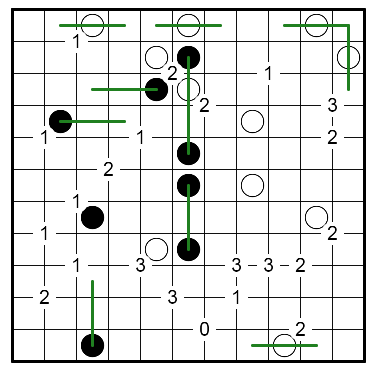Both Masyu and Slitherlink puzzles have as their target a single closed loop that does not touch or intersect itself. So it seems natural to create a hybrid that uses both Masyu and Slitherlink clues. In this puzzle, your goal is to create a loop that satisfies all of the Slitherlink and Masyu clues. The numbers within the squares are Slitherlink clues, and indicate the number of sides of the square used by the path. The white circle and black square dots are Masyu clues: the path must past through the white circles without turning, but must turn at either the step before or after, or possibly both. The path must also pass through the black squares and turn, but must continue straight through the steps before and after. I hope you enjoy!
Solver Note: This puzzle is part of an ongoing series of studies for a future puzzle. While it has some interesting deductions, I don't think it is terribly difficult. So don't panic if you're making progress seemingly too easily!









